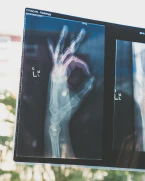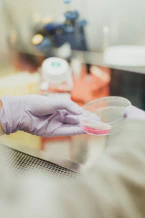Innovative Solutions for Brain Disorders and Healthcare Challenges

Epileptic Focus Treatment: Erasing Errant Signals to Prevent Seizures
In the realm of neuroscience wonders, a remarkable feat comes to light. Picture this: within the depths of your brain lies a spot known as the “epileptic focus.” It’s the point where epileptic seizures take their first breath. And guess what? We’ve found a way to anticipate these impending seizures and thwart them in their tracks.
How, you ask? Well, it involves a bit of magic—okay, not magic, but it’s fascinating nonetheless. We introduce electrical energy into that focal point, erasing the misfiring signals that trigger those disruptive seizures. It’s like rewiring the brain’s faulty circuitry.
This remarkable solution finds its roots in the technology that’s used to regulate the heartbeat—the pacemaker defibrillator. Now, hang on to your hats—brace yourselves for the twist: we’ve adapted this very technology to work its enchantment on the brain. A tiny device, not much larger than a coin, can be tucked away beneath the scalp, out of sight, evading any wire mishaps that might arise from the chest placement.
Imagine forming a company dedicated to weaving this technological magic—a company aptly named NeuroPace. This is where our journey of responsive neurostimulation begins. The device, cunningly designed, makes its home within the cranial bone. A meticulous dance unfolds: an incision is made, the template guides the way, and a dental burr chisels out a perfect pocket for the device to nestle in.
Now, you might be wondering how it all works. Allow me to elaborate: imagine this device with wires resembling a tangle of roots. The green one reaches up towards the brain’s surface, carrying electrodes that flirt with the epileptic focus, sensing its electrical whispers. The magic doesn’t stop there; the blue wire plunges deeper, seeking out what’s known as the “deep brain electrode.” If that’s the source of the epilepsy, we’re ready to pounce on it too.
But hold up, let’s take a moment to appreciate the innovation’s elegance. The device measures about an inch by two inches and boasts a thickness akin to the average cranial bone—nature’s perfect camouflage. It’s a silent guardian that can detect and halt seizures before they even have a chance to announce their presence.
Ah, the perks of this responsive neurostimulation! It activates precisely when needed, fading into the shadows when seizures retreat. Side effects? Almost non-existent, a true rarity. Through countless trials, over forty patients stood strong, bearing witness to this technological marvel without a single complaint.
And the cherry on top? Its invisibility cloak—cosmetic concealment at its finest. Imagine having this guardian of the brain, and no one’s the wiser; it’s like your little secret, securely hidden from prying eyes.
As we delve deeper into the science, allow me to present a visual aid: the electroencephalogram. On one side, you witness the unruly chaos of a spontaneous seizure in action. Now, imagine the moment we intervene, like a maestro conducting a symphony. The unruly lines straighten, the tumult calms, and the seizure’s power wanes, leaving the brain in serene repose.
So there you have it—the tale of epilepsy treatment through electrical whispers. The journey began with seizing the secrets of the epileptic focus and evolved into an intricate dance of wires and signals. This innovation opens doors, not just for epilepsy but a world of brain disorders waiting to be tamed.
Neuro-Pacemaker Innovation: Harnessing Electrical Stimulation to Heal Brain Disorders
Imagine a world where technology not only understands the language of our brains but also mends it. It sounds like something out of a science fiction novel, but it’s more real than you might think. This remarkable journey into the realm of healing and innovation revolves around what I like to call the “neuro-pacemaker.”
Let’s dive right in. You know how our hearts have pacemakers that keep the rhythm steady? Well, imagine applying this concept to our brains. A brain with its own pacemaker—that’s the ingenious idea that sprang forth. Think about it: a device, small enough to find its home beneath the protective cover of your scalp, yet powerful enough to whisper to your brain’s very core.
This neuro-pacemaker holds the key to addressing various brain disorders. It’s like a skilled conductor, orchestrating a symphony of electrical signals within our brains. When these signals go awry, causing havoc and disorder, this innovative device steps in.
Here’s how it works: the neuro-pacemaker sets its sights on the source of the chaos—the epicenter of brain disorders. With a gentle jolt of electrical energy, it calms the storm, silencing the disruptive signals that threaten to derail our well-being. Think of it as a technological guardian, ever watchful and ready to restore order.
But this isn’t just about epilepsy; it’s about a grander mission. You see, many brain disorders share a common thread—an electrical malfunction that sets them into motion. This remarkable innovation, inspired by the heartbeat-regulating pacemaker, sets out to tame this electrical mayhem, not just in epilepsy but in a multitude of brain-related maladies.
The journey begins with a device that’s no larger than the palm of your hand. It nestles within the cranial bone, working its magic in harmony with your brain. The process involves precision—a delicate dance of incisions, templates, and skilled hands creating a safe haven for the device.
The beauty lies in the details: wires like tendrils reach out, carrying electrical messages to specific points. These wires, like skilled messengers, connect the pacemaker to the epicenter of the disorder, where the magic unfolds. It’s a choreography of healing, led by the gentle hum of electrical currents.
And the impact? It’s nothing short of remarkable. A whisper of electricity, delivered with precision, can halt seizures before they wreak havoc. It’s like a safety net woven with threads of science and technology, ready to catch any disruption in its tracks.
As we gaze into this world of innovation, let’s remember that the neuro-pacemaker isn’t just a device—it’s a beacon of hope. A hope that one day, brain disorders will be met with a swift and gentle response. A hope that we can rewrite the narratives of disorders that once held us captive.
So, there you have it—the captivating tale of the neuro-pacemaker, a masterpiece of innovation and compassion. It’s a story of wires and whispers, of electrical dances and healing symphonies. And as we explore further, we discover that our brains hold the key to healing—guided by the flicker of a neuro-pacemaker’s pulse.
Responsive Neurostimulation: Revealing the Shield Against Seizures with Precision
Picture a guardian angel hovering discreetly within your brain, anticipating trouble. A guardian ready to leap into action at the first sign of trouble, preventing chaos before it even starts. That, my friends, is the essence of responsive neurostimulation—a technology that promises a shield against seizures.
Imagine this: a compact device, like a hidden gem, tucked beneath your scalp. This unassuming hero is equipped with the power to sense the electrical whispers of your brain. When those whispers hint at an impending seizure, this device awakens, ready to intervene.
Here’s the magic: the device can distinguish between the brain’s everyday chit-chat and the telltale signs of a seizure about to unfold. At the precise moment, it sends out a gentle, electrical caress—a whisper that disrupts the oncoming storm and restores serenity.
But let’s not stop there. What truly sets this innovation apart is its finesse. It’s a master of timing, intervening only when needed. This isn’t a constant barrage of electrical signals; it’s a precision strike against the chaos. And the results? They’re nothing short of awe-inspiring.
As you may expect, innovation comes with a few question marks. Will there be side effects? The answer is a resounding “not really.” In fact, this technology has proven its mettle in trials, with minimal side effects reported among patients who’ve welcomed this invisible ally.
Yes, you heard that right—invisible. It’s like having a guardian angel who doesn’t need a spotlight. Cosmetically hidden beneath your scalp, this device goes about its business silently, without drawing attention. Your secret weapon against seizures, ever-vigilant, yet never revealing its presence.
In the grand tapestry of responsive neurostimulation, it’s a story of precision and promise. A story where wires and whispers unite to shield us from the storms that threaten to disrupt our lives. With every electrical pulse, it’s a reminder that innovation isn’t just about machinery—it’s about hope. Hope that our brains can find solace amidst the chaos, guided by the gentle touch of technology.
So, as we reveal the layers of this innovation, let’s celebrate the dance of signals and the harmony of healing. Let’s hug the future where seizures lose their grip, and our brains find a protector in the form of responsive neurostimulation.
Innovative Healthcare Reform: Bridging Gaps in Brain Disorder Treatment and Beyond
In the realm of healthcare, innovation isn’t just about fancy gadgets. It’s about addressing the heart of the matter—like hugging a new dawn for brain disorders. Step into a world where technology, compassion, and change intertwine to weave a tapestry of hope.
Picture this: a world where brain disorders aren’t merely challenges, but opportunities for innovation. A world where we take the lessons learned from battling epilepsy and apply them to other brain-related mysteries. It’s a symphony of discovery, a journey that seeks answers beyond the surface.
But what about the complexities of medical procedures? Can they be transformed into seamless experiences? The answer lies in a realm of human engineering studies and industrial design. Imagine this collaboration—a fusion of minds dedicated to crafting medical devices that marry form and function. A future where even the most intricate procedures become as effortless as a dance.
Now, let’s talk about a touchy subject: malpractice litigation. In a world where lawsuits loom, can we find a way to heal both patients and the healthcare system? Enter a visionary idea: transforming the nature of informed consent. A world where complex documents give way to interactive videos that enable patients to truly understand their procedures.
The concept doesn’t stop there. A patient, armed with knowledge from these videos, stands united with the medical presenter. Together, they venture into the unknown, aware of the risks and challenges. This partnership is a shield against malpractice litigation—a promise that both parties take responsibility for the journey ahead.
And that’s not all. The idea extends to settlements by arbitration, a gentler path than the courtroom battlefield. It’s about caring understanding, fostering trust, and ensuring fairness. Imagine a healthcare landscape where disputes are settled with respect and compassion, saving resources and redirecting them towards healing.
So, here’s the bottom line: innovative healthcare reform isn’t just a dream. It’s a tangible reality, born from a desire to bridge gaps, to heal minds, and to mend hearts. It’s about crafting a world where brain disorders are met with understanding and solutions. A world where medical procedures are a harmonious blend of science and art. And a world where litigation transforms into resolution, paving the way for a brighter, healthier future.
Conclusion
As we journey through the landscape of innovation and discovery, we find ourselves at a crossroads where science and compassion intersect. The stories that unfolded before us shed light on the remarkable potential that lies within the human mind and the wonders it can achieve.
From the marvel of erasing errant signals to prevent seizures, to the ingenious neuro-pacemaker that counters brain disorders with electrical precision, we’ve witnessed the birth of solutions that hold the power to transform lives. These innovations are like keys to unlocking doors that were once closed, offering hope where there was doubt.
Responsive neurostimulation stands as a testament to the magic of timing and the art of healing. With its whispers of electricity, it ushers in a new era where seizures lose their grip, and patients regain control over their lives. The promise of minimal side effects and hidden guardianship adds a touch of comfort to the journey towards recovery.
And as we step beyond the realm of the brain, we’re met with a vision of healthcare reform that seeks harmony. A world where complex procedures find simplicity, and where malpractice litigation gives way to understanding and resolution. It’s a step towards a brighter, fairer healthcare landscape, where both patients and medical professionals find common ground.
In these stories, we find echoes of hope, of progress, and of unity. They remind us that innovation isn’t just about creating novel technologies; it’s about addressing human needs and enhancing our lives. It’s about turning challenges into opportunities, and weaving together the threads of science, compassion, and collaboration.
As we close this chapter, let’s carry these tales of innovation with us—a reminder that the journey towards a better future is a shared one. Let’s hug the power of the human mind to reshape our world, one idea at a time. And in doing so, let’s look forward to a horizon where possibilities are boundless, and where innovation continues to light our way.










